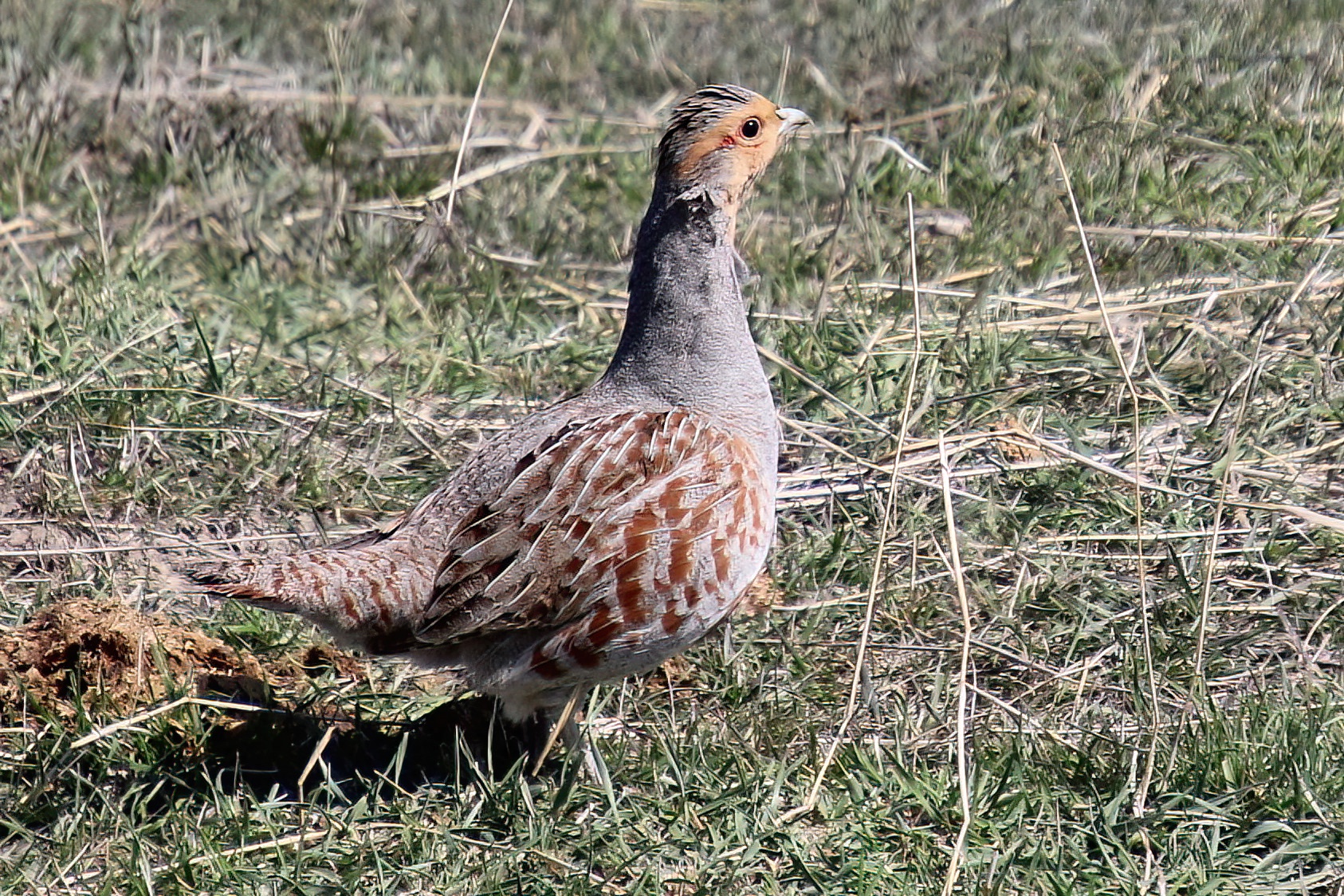While with Dad driving north of Rife, in his ‘65 Chevy Biscayne up Range Road 74 during an early spring morning in 1969 to ice fish near Pelican Point on Moose Lake, my eyes were drawn to the roadside snowbank. With headlights illuminating the snow, a sudden flurry of movement caught my attention. A flock of birds had exploded from the bank, flying briefly out in front of the car, and then off into a thin copse of aspen trees. “They’re Hungarian Partridge”, my Dad noted.
Fifty years later, on April 30th, 2019 to be precise, my second encounter with the Hungarian Partridge, or the Gray Partridge, occurred. We had been looking for waterfowl on McElroy Slough, just north of Chestermere, when we flushed a single partridge from a stubble field. In viewing a photograph we identified our “catch”. Certainly a chubby bird, we agreed this partridge had a striking appearance. Sporting a soft gray body color on the chest and flanks, a tan-orange face and rusty stripes down the sides, brown back and white belly, this partridge is truly eye-catching. Add in a distinctive horseshoe shaped brown patch on the breast of the male, a small head, thick bill and a short tail, the Gray Partridge is nature’s beauty.
Introduced to Canada in the early 20th century, with the initial stock from Hungary, this partridge seems to thrive best in the grassland and agricultural areas of southern Alberta, Saskatchewan and Manitoba. After incubating and raising up to fifteen young in a clutch, two or three families may join together to form a sizable covey, numbering over 20 birds. Elaine and I have seen this coveys throughout the fall and the first part of winter. While driving down township and range roads we’d invariably spook up coveys ranging from six to over twenty partridge, all exiting in rapid flight. Indeed we couldn’t help but notice how wary these birds seemed to be on every sighting. Getting a good photograph would be a frustrating experience.
That was until October 7th of 2023, while enjoying a Thanksgiving Dinner at my sister Pam’s place in Northwest Calgary, when Elaine’s best partridge filled photographic opportunity arrived. Pam had six partridge visit her backyard on an almost daily basis. Five of the six would fly over the fence and one would always enter the yard by coming under the fence. The covey would pick through the grass looking for seeds and insects, while emitting a sound somewhat distantly similar to that of a ring-necked pheasant. Pam said that occasionally they would walk onto her deck, and look into the dining room through the patio door glass.
Sadly the life span of this partridge species is short, averaging 1.8 years. Predators are numerous and include skunks, owls, hawks, falcons, foxes, raccoons as well as domestic cats and dogs. This might explain their skittish behavior in the wild. To reconnect with this partridge and appreciate its being was most satisfying.
I’m Going Hungarian Gray

In response to Canada's Online News Act and Meta (Facebook and Instagram) removing access to Canada's local news from their platforms, Anchor Media Inc encourages you to get your news directly from your trusted source by bookmarking this site and downloading the Rogue Radio App. Send your news tips, story ideas, pictures, and videos to info@anchormedia.ca.






